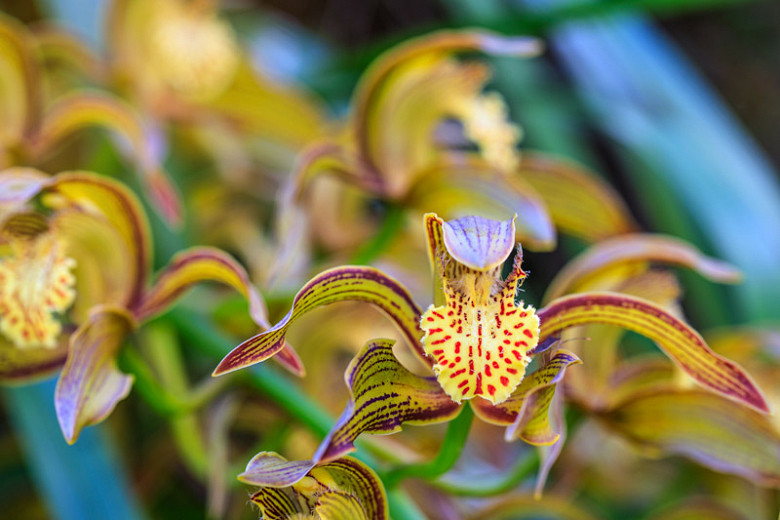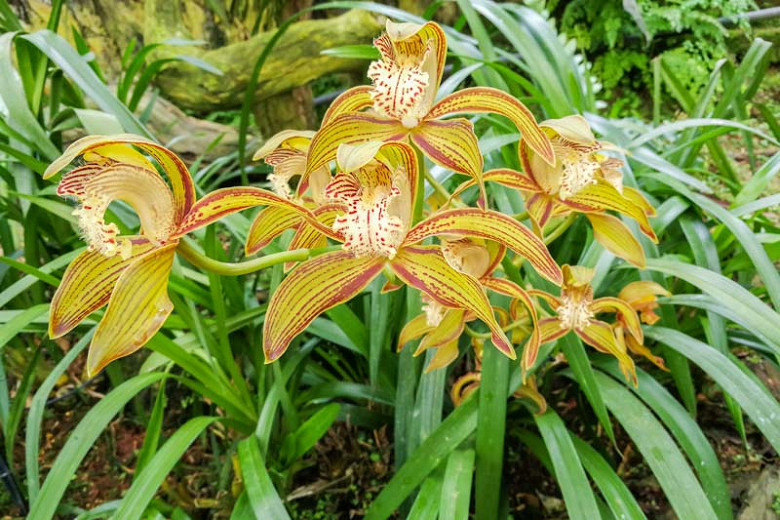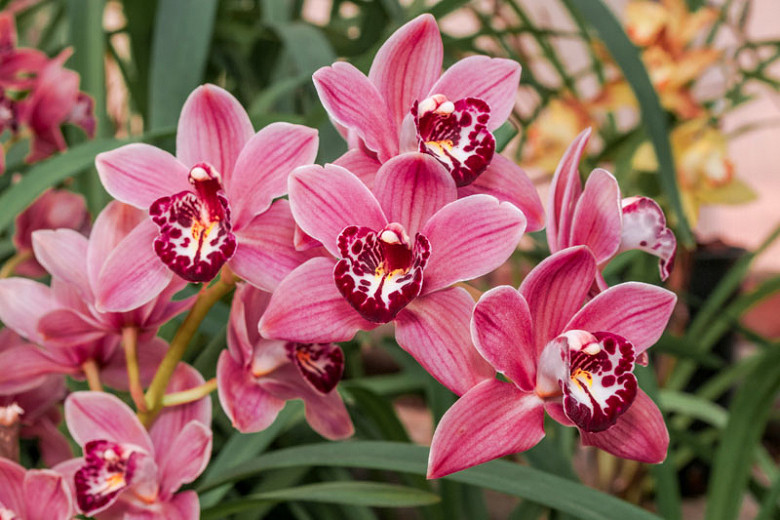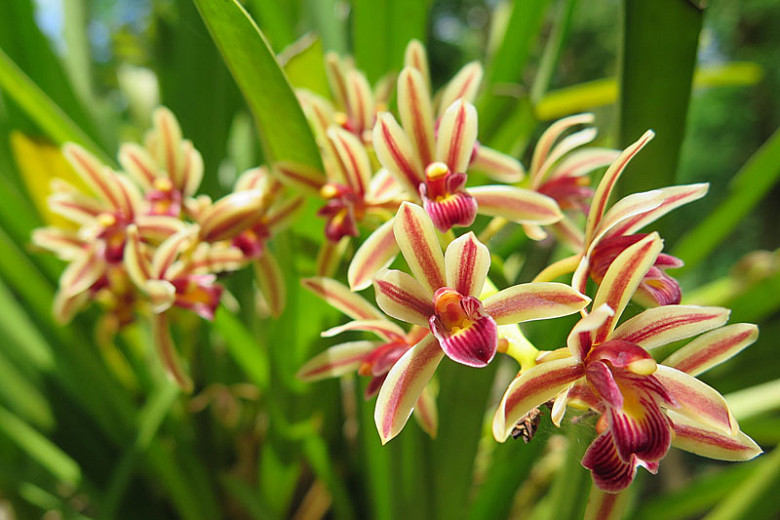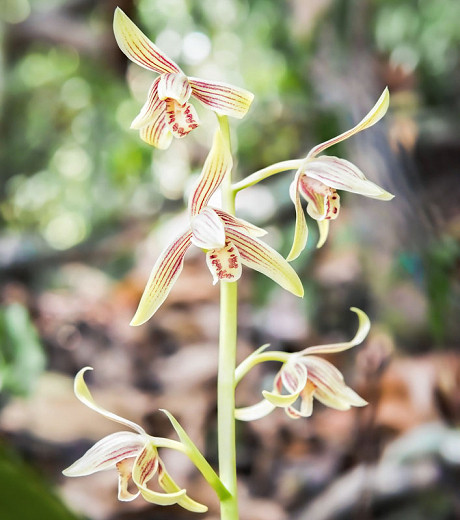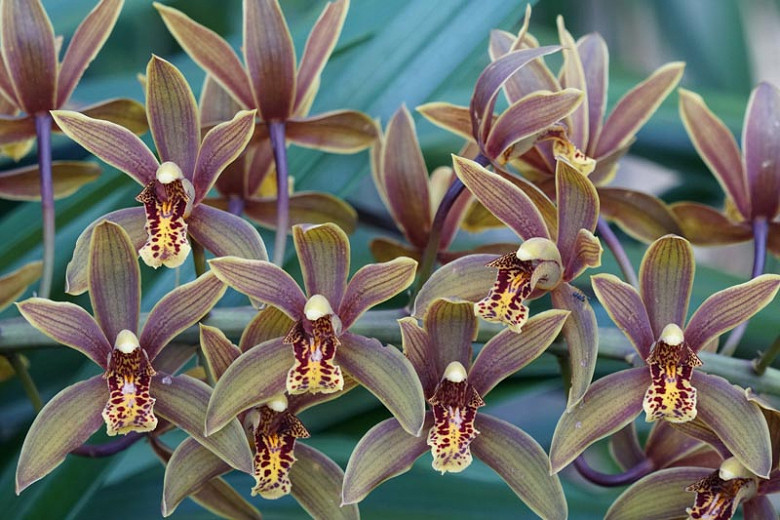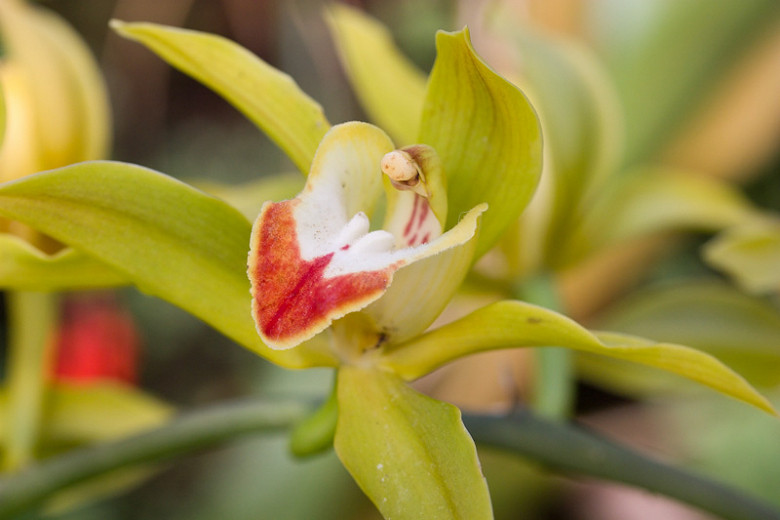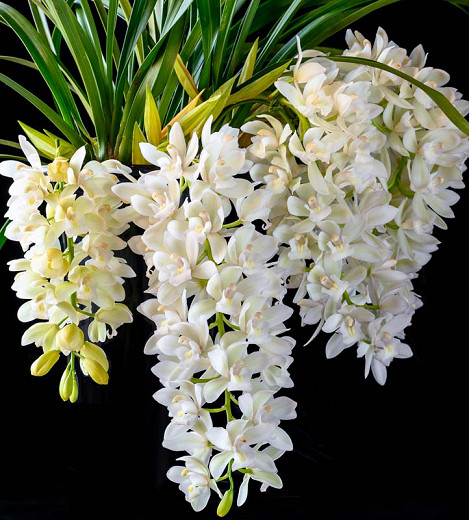Cymbidium tracyanum (Tracys Cymbidium)
Cymbidium tracyanum (Tracy's Cymbidium) is a large lithophytic or epiphytic orchid species boasting 3-4 long, arching stems giving rise to 10 to 20 flowered inflorescences with triangular floral bracts and strongly fragrant flowers. Blooming in the fall and early winter, the blossoms, 4-6 in. across (10-15 cm), feature olive to dark green sepals and petals veined with bronze and a triple, strongly wavy, white or cream lip adorned with red spots. The bilaterally compressed pseudobulbs carry linear, distinctly keeled, mid-green leaves, about 32 in. long (80 cm). Native to China, Thailand and Myanmar, Cymbidium tracyanum prefers cool to cold conditions for optimum growth. It is found on damp rocks or on tree trunks in damp, shady evergreen submountain and mountain forests at elevations of 4000-6200 ft. (1200-1900 m).
- Grows up to 36-48 in. tall (90-120 cm).
- Grows in epiphytic or terrestrial orchid compost in bright light with light shade during the middle of the day. In cool areas, full sun is tolerated.
- Ideal temperature ranges from 61°F (16°C) and up to 72°F (22°C).
- Maintain adequate humidity (50-80%) in spring and up to 80-95% during the rest of the year. In the home, placing the plant in a tray of damp pebbles is ideal.
- Water thoroughly, keeping the potting material evenly moist.
- Feed every week with an orchid fertilizer containing nitrogen, phosphorus and potassium in equal parts.
- Propagate by division of pseudobulbs when pot-bound.
- Once the flowers have faded, remove the spent flower spikes.
- Repotting is usually done in spring after flowering, every two years or when the potting medium decomposes. Choose a water-retentive potting mix. Medium-grade fir bark with peat moss and perlite is a common mix. Select a pot that will allow for at least 2-3 years of pseudobulb growth before crowding the pot.
- Generally disease free. Keep an eye out for aphids, glasshouse red spider mite and mealybugs.
- Native to southern China, India, and Indo-China.
Tips for reblooming
- Make sure that your Cymbidium is receiving at least 12 hours of filtered sunlight or UV rays daily, especially during spring, summer and fall months. If the leaves are bright green or too dark, your plant is not getting enough light for blooming. Leaves should be a medium to golden green in color, not dark green.
- Moderate and regular watering, adequate fertilization are important in triggering your cymbidium orchids to bloom.
- Cymbidiums need a day-night temperature difference of at least 25°F (15°C) to bloom well. If you are growing your cymbidium outside, make sure you regularly remove all fallen leaves and debris that accumulate on the orchid and in the pot. This will avoid them to decompose and cover your emerging flower spikes and rot them out.
Requirements
| Hardiness | 10 – 12 |
|---|---|
| Plant Type | Orchids |
| Plant Family | Cymbidium – Boat Orchids |
| Exposure | Partial Sun |
| Season of Interest | FallWinter |
| Height | 3' – 4' (90cm – 120cm) |
| Water Needs | Average |
| Maintenance | Average |
| Soil Type | Loam, Sand |
| Soil pH | Acid, Neutral |
| Soil Drainage | Well-Drained |
| Characteristics | Cut Flowers, Fragrant, Showy, Evergreen |
| Garden Uses | Beds and Borders, Patio and Containers |
